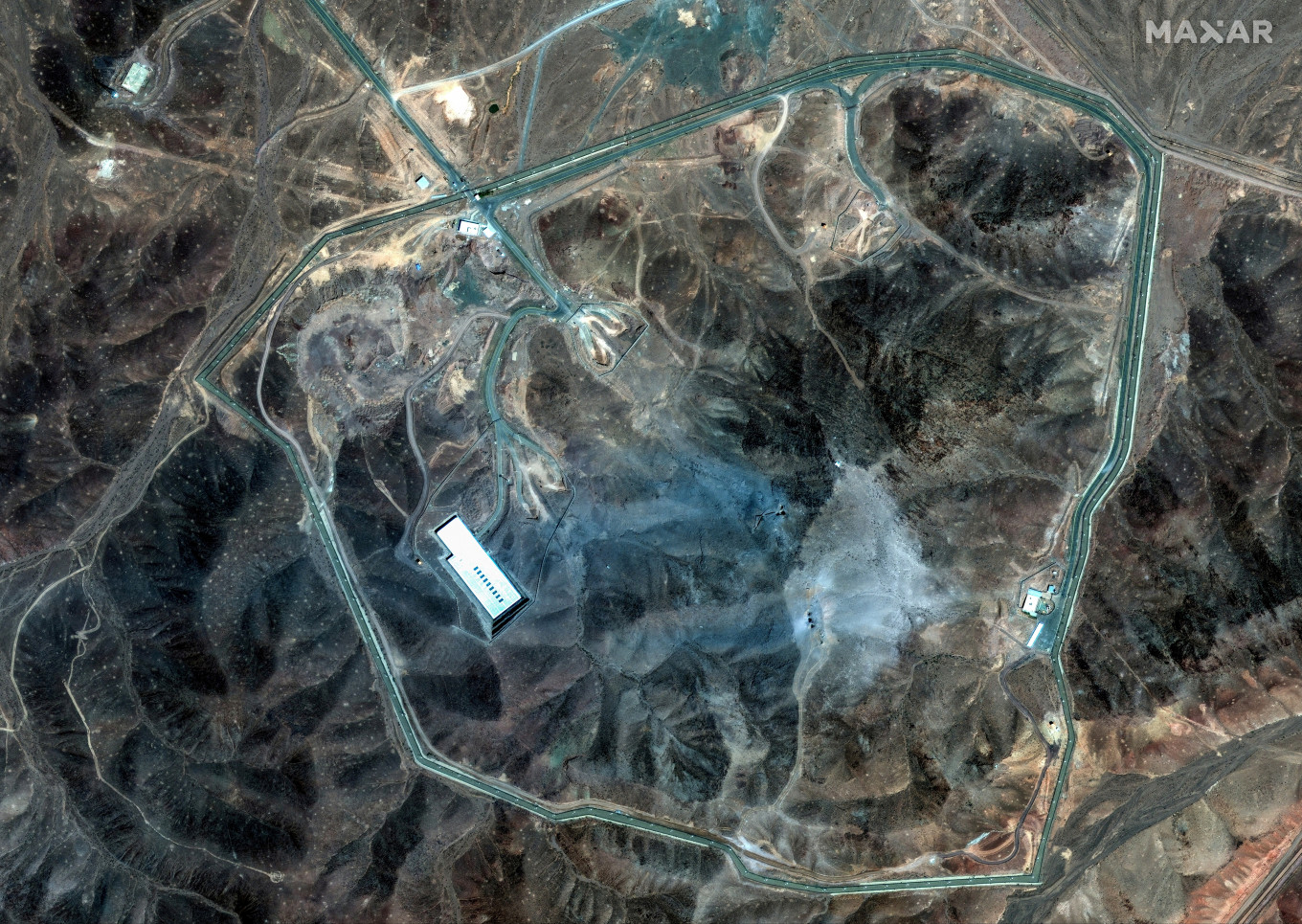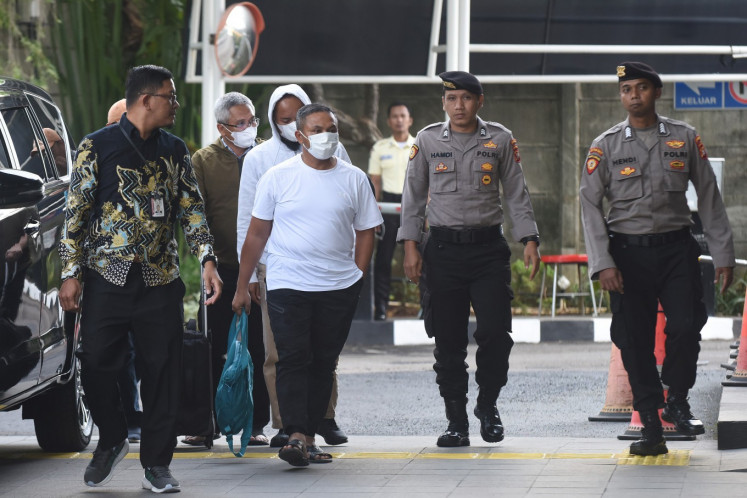Popular Reads
Top Results
Can't find what you're looking for?
View all search resultsPopular Reads
Top Results
Can't find what you're looking for?
View all search resultsTrump's strikes on Iran: A quest for nuclear supremacy
A nuclear strike on Iran's dense cities could lead to millions of deaths and injuries, widespread infrastructural collapse, and social breakdown, with victims suffering severe pain without medical care.
Change text size
Gift Premium Articles
to Anyone
W
hen United States President Donald Trump ordered attacks on three major Iranian nuclear sites, it reflected a distorted view of US national security, mirroring an equally misguided concept of Israeli security. Ironically, Iran is a signatory to the Non-Proliferation Treaty (NPT), which Israel has not joined. As detailed in my book, The Fall of Israel (2025), the path to Middle East conflict was set almost six decades ago.
Israel first developed nuclear capabilities in May 1967, before the Six-Day War, when prime minister Levi Eshkol secretly ordered the assembly of two crude nuclear devices at the Dimona reactor. These bombs were prepared for deployment, intended for detonation near the Egyptian border if Arab forces overwhelmed Israeli defenses.
During the Yom Kippur War in October 1973, despite intelligence warnings, prime minister Golda Meir opted against a preemptive strike, fearing the US repercussions like those in 1956. Initial mobilization failures led to an existential threat. Defense minister Moshe Dayan reportedly told Meir, "this is the end of the Third Temple," a dual reference to the state of Israel and a code word for nuclear weapons. On Oct. 8, 1973, Meir's cabinet assembled 13 20-kiloton atomic bombs, more powerful than the Hiroshima bomb. These were intended for Egyptian and Syrian targets as a strategic deterrent, signaling a tentative "Samson Option", a last-resort, massive retaliation.
The potential devastation of tactical nuclear strikes was not fully understood then. As Soviets resupplied Arab forces, Meir requested US military aid from Richard Nixon. Following Israel's full nuclear alert and the loading of warheads onto planes, Nixon launched a full-scale airlift to deliver supplies.
By the time aid arrived, Israel was gaining the upper hand. This near-nuclear incident fundamentally altered the Middle East, with US military aid contributing to the 1973 OPEC embargo, the 1979 overthrow of the Shah in Iran, and subsequent oil crises. These crises led to stagflation, record interest rates, the decline of Keynesian economics and the rise of monetarism and Ronald Reagan's rearmament.
Israel's nuclear arsenal is conventionally estimated at around 90 warheads, making it the world's ninth-largest nuclear power. Unofficial estimates, however, range from 200 to 400 weapons, which would place Israel as the fourth-largest, behind Russia, the US and China.
Most Israelis view Iran as the primary nuclear threat, despite Iran's not having developed nuclear weapons, though it may have enriched enough material. A nuclear strike on Iran's dense cities could lead to millions of deaths and injuries, widespread infrastructural collapse and social breakdown, with victims suffering severe pain without medical care.
Officially, Israel maintains a policy of nuclear ambiguity, neither confirming nor denying its nuclear weapons, stating it "will not be the first country to introduce nuclear weapons to the Middle East." However, its policy is effectively preemptive.
The country first flirted with the nuclear option on the eve of the 1967 war, concerned that it might lose. Since the early 1960s, Israel has relied on what investigative journalist Seymour Hersh has described as the Samson Option. The term refers to the biblical figure of Samson, who pushed apart the pillars of a Philistine temple, bringing down the roof. In the process, he killed not just his enemy, the Philistines, but himself as well. It suggests an ultimate deterrence strategy of massive retaliation.
This was evident in October 1973 when Meir and Dayan mobilized nuclear warheads, prompting Nixon's rearmament and deepening US-Israeli military ties, a symbiotic relationship that Trump later lauded after the strikes on Iran.
In 1981, Israel destroyed Iraq's Osirak nuclear reactor under the Menachem Begin government, initiating its "Begin nuclear doctrine", prohibiting any "hostile" regional state from possessing military nuclear capability.
Begin framed this "anticipatory self-defense" as a long-term national commitment: "Never again! [...] We shall not allow any enemy to develop weapons of mass destruction turned against us." This doctrine, reflecting the Likud party's offensive security view, traces back to the early 1960s' Operation Damocles, a Mossad campaign to assassinate Nazi rocket scientists working for Egypt.
Mossad head Isser Harel even recruited former Nazis, like Waffen-SS commando Otto Skorzeny, for intelligence on Arab nations. This direct lineage extends from the Osirak attack to the targeted killings of Iranian nuclear scientists since 2010.
After the Oct. 7, 2023, Hamas offensive, Benjamin Netanyahu's heritage minister, Amichai Eliyahu, controversially suggested dropping a nuclear bomb on Gaza, a statement quickly disavowed by Netanyahu, who nonetheless did not fire him. Eliyahu had also opposed humanitarian aid to Gaza, claiming "no such thing as uninvolved civilians."
Eliyahu's desire for extreme force was tragically realized. By late April 2024, Israel had dropped over 70,000 tonnes of bombs on Gaza, surpassing the combined bombing of Dresden, Hamburg, and London in World War II. This amounted to over 30 kilograms of explosives per individual, primarily affecting women and children.
Gaza had been bombed almost five times more heavily than Hiroshima and Nagasaki combined before the May 2024 Rafah offensive, an act of "extraordinary brutality and blind disregard to human life." The complicity of the administration of then-US president Joe Biden, alongside their hollow assurances of working for peace, has been widely criticized.
Despite US intelligence estimating Iran was three years away from nuclear weapon capability, President Trump, adopting a "peace through strength" premise, overtly joined Israel's air campaign against Iranian nuclear sites. This move signals the demise of US diplomacy, replaced by "diplomatic deception and historically unprecedented lethal force."
All gloves are now off. The premise that the Iran attacks reflect a “mission accomplished” could not be more off. The carnage has not ended. It has begun.
***
The writer is the author of The Fall of Israel (2025) and an internationally renowned visionary of the multipolar world and the founder of Difference Group.










